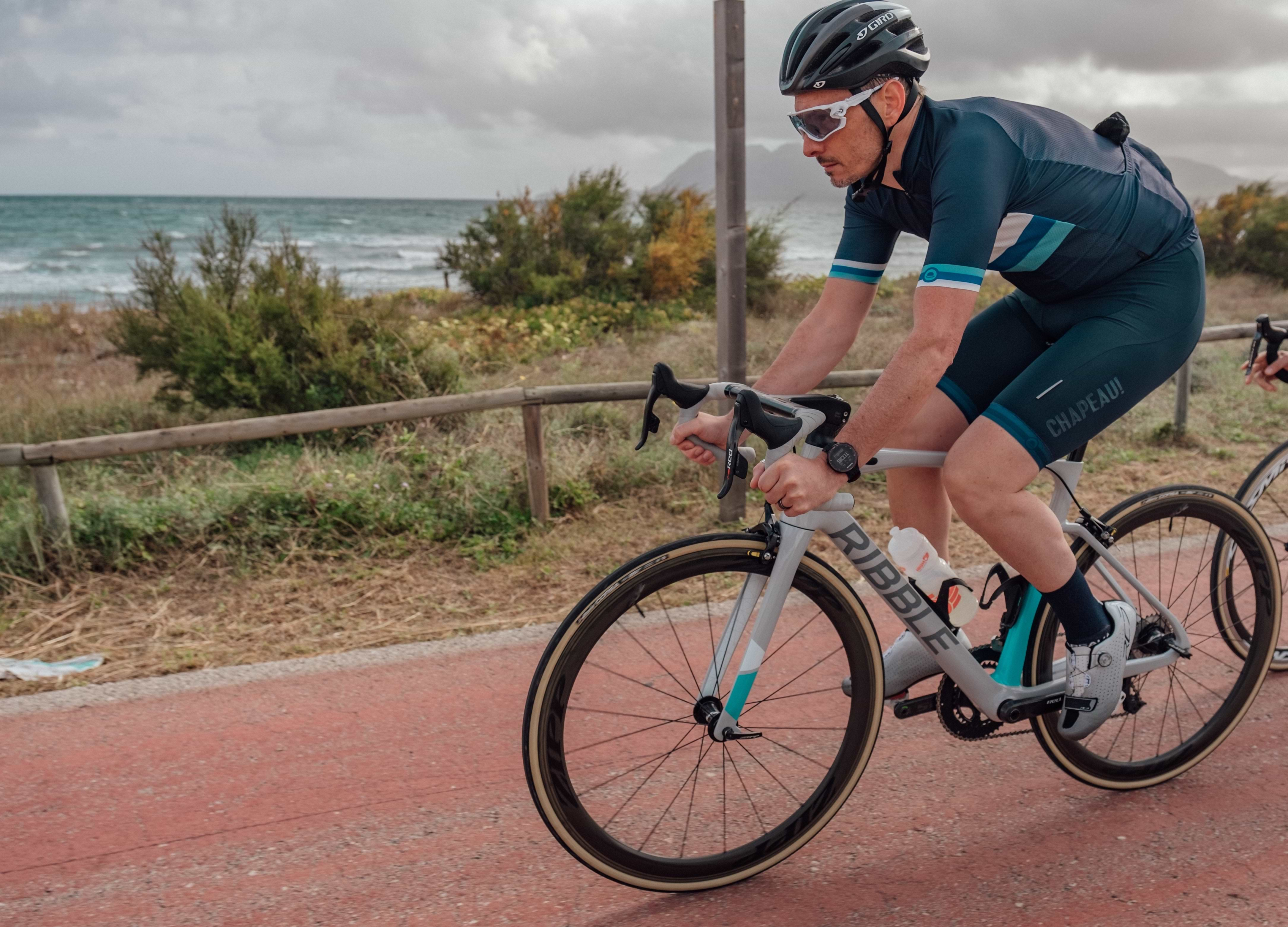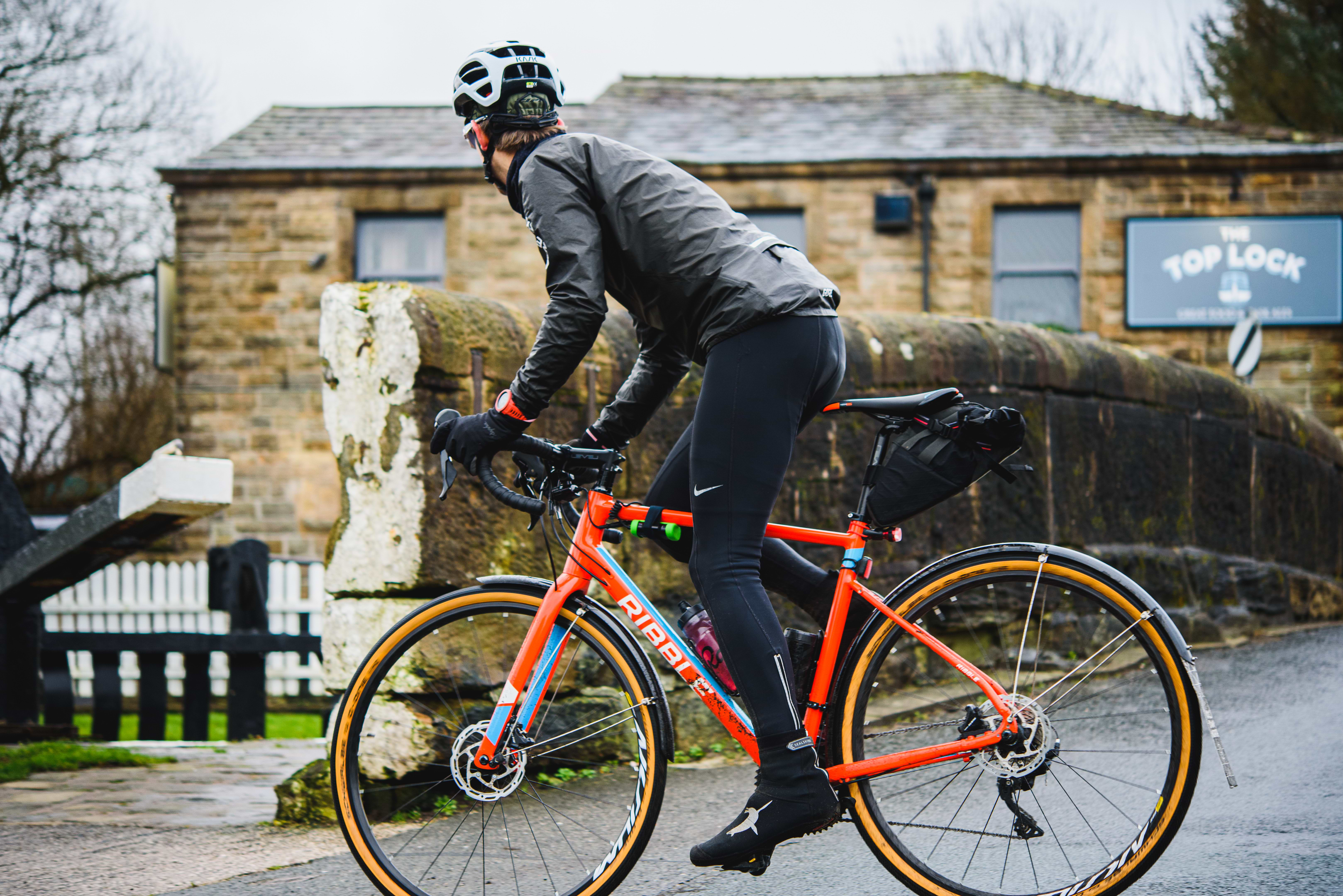Discover top tips for cycling to work from our staff and pro team riders. Learn how to make your daily commute safer, more enjoyable, and stress-free with expert advice and practical insights.
Tips for Cycling to Work
With more people embracing cycling as a way to commute, we’re excited to share our top tips for cycling to work. Our staff and pro team riders share their advice on making your cycle commute more fun and enjoyable.
Commuting to work by bike definitely has its benefits. It saves money and helps you get fit at the same time, win-win! It can also be quicker than sitting in traffic jams on roads and motorways that more resemble car parks during the working week.
Many of the staff who work at Ribble commute to work. So, why not share the benefit of their experience in providing you with a few of our tips for making your daily commute safer, more comfortable and more enjoyable?
It's easy to commute to work when the sun is shining and the temperatures are high. But another matter entirely, to brave the cold and dark of winter. So, we asked some of the hardy riders who ride to Ribble in all weather to provide their top tips.
*(Sometimes we think they just want the kudos for being out in all weathers but fair play to them.)
Jamie Burrow - Head of Product

Above Image: This was not a commute, but we all wish our ride to work involved Mallorca's best roads.
I've commuted on and off for around two years. I always said I would never do it, as I was so used to having my riding as structured training for so many years. But after a long lay off (6 years), I wanted to lose weight and regain some level of fitness. Due to time constraints, my only option was to start commuting by bike.
My direct commute is around 10 miles each way, which I lengthened to around 20 miles in the morning over the summer. I initially struggled to motivate myself to ride before work unless it was actually an A to B commute. However, I'm now fully committed and currently riding 2 hours every morning before work.
I ride the Gravel SL fully loaded with guards and rack during winter, and the Allroad Ti during the summer.
I initially used panniers but often switched to backpacks as I feel the bike handles better without the extra weight of a pannier.
Jamie's Top Tips
- Leave plenty of spare clothes at work. Don’t rely on riding home in the same kit you rode in with.
- You need to get from A to B anyway. So, as long as the distance isn’t excessive, riding to start the day really sets you up mentally rather than sitting in traffic.
- Good lights for winter and always more than one front and rear in case of battery failure.
Alan Gray - Copywriter

I've been commuting to work now for the best part of 24 years - every day, come rain or shine. As these rides take place in the North West of England, it's mainly the former rather than the latter.🙄
If I ride direct, which I seldom do when the weather's at least half-decent, it's only 5-miles each way. However, I try to incorporate a few loops into my daily rides at least a couple of times each week. These can range from anywhere between 8 and 30 miles, depending upon how I'm feeling on any particular day. Any veteran cyclist will tell you that some days you feel amazing and others a little meh!
I've always heard about the qualities of steel bikes but had until recently never ridden one. So when it came time to upgrade my commuter I opted for a CGR 725 steel bike because, you know... disc brakes. I can't begin to describe what a difference they've made to my daily commute. There's a hill on the way home that includes a mini-roundabout half way down and ends at another. Stopping in time to make it through the first roundabout can be hairy in the wet but the discs ensure I can stop in plenty of time.
Here, at Ribble, you can easily differentiate the regular commuter's bikes from their fair weather colleagues. The everyday commuter bikes all have non-matching wheels and mix and match components from various groupsets. Commuting in all-weathers takes a toll on a bikes moving parts hence this strange diversity in drivetrains.
Another bonus of riding the CGR 725 is that it's suitable for multiple terrains. So, if I feel like taking a more adventurous route to work I can always throw on my spare wheels and hit the gravel. These are always kitted out with some off-road capable tyres, so I can just throw them on and partake of some trail-shredding action on my way into work, on the way home, or both. But, mainly on the way home. Otherwise, you'll find yourself stuck wearing the same dirty kit that you rode into work with!
Alan's Top Tips
- Mudguards. You'll sometimes see people state that mudguards make the bike look ugly. While this may be true, you will typically find that these aren't the type of people who ride to work in every condition imaginable. Trust me. If you cycle every day, in every sort of weather, you need mudguards in your life. Some of my fashionista colleagues even refuse to use them! There's a certain perverse pleasure in watching someone go to extreme lengths to dry out their shoes in time for the ride home, when mudguards could have prevented them becoming drenched in the first place! My shoes are always dry as a bone and less pongy as a result!
- Change of clothing. If you have lockers or something similar at work, leave your clothing there and just refresh it as required. I pack a fresh t-shirt and underwear daily. I also have about seven pairs of trainers at work. But we won't talk about my footwear addiction!
- Wear layers appropriate to the conditions. As a species, we cyclists tend to employ layers of clothing rather than wear a bulky winter jacket. I'm prone to overheating and much prefer to layer up and shed layers as required. Arm, leg, and knee warmers are easy to remove. If you wear a thick winter jacket and overheat you're in trouble. It's so important to regulate your body heat, so wicking away sweat is a must. Therefore, a good undervest is essential. I recommend a Coolmax style vest in the summer and a Merino type for winter (top tip: Merino wool vests are odour resistant!).
- Be visible. As cyclists, we rightly become annoyed at motorists close passing us, or those near misses where you know that the driver simply did not see you. However, its all too common to see fellow cyclists dressed from top to toe in dark clothing. That may be fine for a weekend ride bathed in bright sunshine. On a dark, murky commute it's asking for trouble. If you don't fancy going full hi-viz, wear bright volours which help you stand out. I also always run a rear light if the weather is anything other than bright sunshine. Most lights now have a daylight running mode, so there's no excuse not to avail yourself of improved protection.
Tom Timothy, Ribble Weldtite Pro Team Rider
Always be getting the miles in. I commute into Manchester. My commute is 20 minutes on the way there on-road and 45 minutes on the way home on gravel.
Tom's Top Cycling to Work Tips
- Get a decent backpack and rear mudguard to stop any rain or dirt being thrown up as you're riding.
- When possible, ride off-peak if you can.
- In the evenings why not extend your ride slightly along canal towpaths and the like to avoid traffic?
- I also leave heavy stuff at work throughout the week under the desk. Shoes, towel (in case it has rained), deodorant, hair stuff. All I carry is a shirt, trousers, laptop, puncture repair kit. Anything that's easy to fit into a rucksack.
Kevin McCambridge, Ex-Ribble Weldtite Pro Team Rider
Recently, I was commuting 5 days a week into college. It was a 60-minute ride in and a 90-minute ride home usually. The commute was on my Endurance SL R race bike with training wheels. I rode it all year round but had mudguards. I would use a big backpack to carry my work with me and it was waterproof, so nothing got too wet. I was doing sport so showers and a wash-up area was easy to access.
Kevin's Top Cycling to Work Tips
- Check out what direction the wind will blow in from the night before so you can leave at the right time.
- Get into college, or work, in plenty of time. Preferably before you need to be there so you have time to chill out for a while and eat breakfast. Cycling makes you hungry!
- Make sure your lights are charged and you are visible.
- Always take extra kit as the weather can change throughout the day.
- Eat well throughout the day to fuel your ride home.

Confused when it comes to bike sizing? Choosing the right size bike can make or break your commute to work - make sure to read Ribble’s guide on bike sizing.
Ribble CustomColour, - find out what it is, how it works and what the options are.
Tags
- | cycling tips
- | guides
- | cycle2work
- | cycle to work
- | cycle commute
- | cyclescheme
- | cycle commuting
